

Viking Art: Carvings, Metalwork & Modern Fan Artwork. The sword-weilding Norsemen of yesteryear had quite the reputation as warriors.

Perhaps it may surprise you to learn that there's plenty of Viking art from the period. If you think that ruthless, seafaring barbarians had little time for art, then think again. Viking history shows that the Norse people had a fine tradition of artistry that rivals anything else throughout history. Studies in Scandinavian Literature: Magic, Monsters, and Miracles in Medieval Scandinavian Literature : Department of Scandinavian, UC Berkeley.
L&S Breadth: Arts & Literature The literature of medieval Scandinavia is filled with elements of what we would call the “supernatural”: the walking dead, giants and trolls, sorcery, and even Christian miracles.
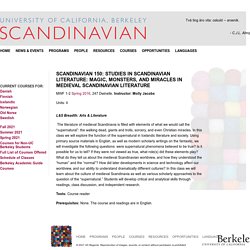
In this class we will explore the function of the supernatural in Icelandic literature and society. Using primary source materials in English, as well as modern scholarly writings on the fantastic, we will investigate the following questions: were supernatural phenomena believed to be true? Scandinavian literature. Scandinavian literature, also called Nordic literature, the body of works, both oral and written, produced within Scandinavia in the North Germanic group of languages, in the Finnish language, and, during the Middle Ages, in the Latin language.

Scandinavian literature traditionally consists of works in modern Swedish, Norwegian, Icelandic, Danish, and Faroese, all members of the North Germanic group of languages. The literary works written in these languages show deep-seated common linguistic ties. The Finnish language is unrelated to the North Germanic languages; it belongs instead to the Baltic-Finnic branch of the Finno-Ugric language family and is most closely related to Estonian and Karelian.
Untitled. Untitled. Sweden: population 2020. What Is A Constitutional Monarchy? - WorldAtlas. A monarch is the head of a state or region for a lifetime, or until he or she abdicates the throne.
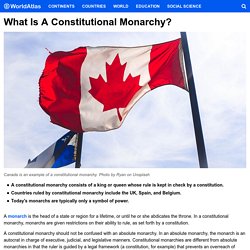
In a constitutional monarchy, monarchs are given restrictions on their ability to rule, as set forth by a constitution. A constitutional monarchy should not be confused with an absolute monarchy. In an absolute monarchy, the monarch is an autocrat in charge of executive, judicial, and legislative manners. Constitutional monarchies are different from absolute monarchies in that the ruler is guided by a legal framework (a constitution, for example) that prevents an overreach of power. Hierarchy In The Viking Age: The Social Classes Of The Norsemen.
Untitled. Untitled. Religion in Scandinavia: Norse, Christianity, Islam – Scandinavia Facts. Scandinavian countries, such as Norway, Denmark, and Sweden, while part of Northern Europe, maintain a distinct culture and identity.

Furthermore, each country has a unique national identity and sub culture of its own. There is no exception when it comes to religion. In Scandinavia, Evangelical Lutheran is the most prominent religious group. Yet other expressions of Christianity, the ever-expanding Muslim population, and the revitalization of traditional Norse religion, has created a diverse array spiritual communities in the region. Christianity is a prominent influence in Scandinavian life. The Nine Realms in Norse Mythology. There are nine realms in Norse Mythology, they are called Niflheim, Muspelheim, Asgard, Midgard, Jotunheim, Vanaheim, Alfheim, Svartalfheim, Helheim.
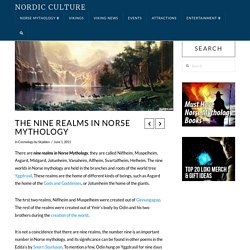
The nine worlds in Norse mythology are held in the branches and roots of the world tree Yggdrasil. These realms are the home of different kinds of beings, such as Asgard the home of the Gods and Goddesses, or Jotumheim the home of the giants. The first two realms, Niflheim and Muspelheim were created out of Ginnungagap. Norse Religion - ReligionFacts. Norse religion refers to the religious beliefs and practices of pre-Christian Scandanavia, especially during the Viking era.
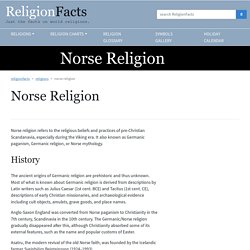
It also known as Germanic paganism, Germanic religion, or Norse mythology. History The ancient origins of Germanic religion are prehistoric and thus unknown. 403 Forbidden. Viking Beliefs. What Language Did the Vikings Speak? – AleHorn - Viking Drinking Horn Vessels and Accessories. If you have been following this blog for a while, then you've probably read about the different translations we use to cite our sources.
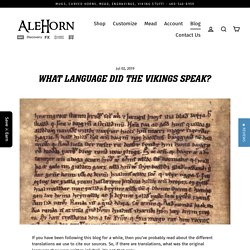
So, if there are translations, what was the original language they were written in? Well, it's not that easy. Untitled. 403 Forbidden. Untitled. Daily Life in the Viking Age. Daily life for most men and women during the Viking Age revolved around subsistence-level farmwork.

Almost everyone lived on rural farmsteads that produced most of the goods used by the people who lived there. The work on a farmstead was divided by gender/sex. Women were customarily charged with the tasks that were performed “within the threshold” of the house, while men were charged with those tasks that lay outside of the house.[1] The two main tasks of women were producing clothing and preparing food.[2] Women baked, cooked, made alcoholic drinks, and made dairy products such as milk, butter, and cheese.
Milking sheep and cows were tasks that fell to women as part of this process, even though those activities were often performed outside of “the threshold.” How The Weather Affected the Vikings in Viking Age? - baviPower Blog – BaviPower. Back to the Viking Age, the weather was among the determining factors that decided what the life of the Vikings would be like.

In other words, the Vikings were likely to depend a lot on the weather. Many scholars believed that it was the weather that shaped the Viking mindset of living, entertainment, and faith. The Origins of the Norse Mythology. Norse mythology comprises the indigenous pre-Christian religion, beliefs and legends of the Scandinavian peoples, including those who settled on Iceland, where most of the written sources for Norse mythology were assembled. Norse mythology is the best-preserved version of the older common Germanic paganism, which also includes the very closely related Anglo-Saxon mythology. The Norse Gods are the mythological characters from stories shared by Northern Germanic tribes of the 9th century AD. These stories were passed down in the form of poetry until the 11th – 18th centuries when the Eddas and other medieval texts were written.
A History of the Vikings: Simplified – Scandinavia Facts. The Vikings were Norse people who have a rich and fascinating history. With roots primarily in southern Scandinavia, they raided some countries, and traded with others, in order to build wealth and extend their influence. In the year 789 A.D., the Vikings launched their first raids on England. Similar violent attacks continued intermittently through the year 1066, which generally marks the end of the Viking age. Perhaps the most well-known Viking is Ragnar Lodbrok, who successfully led raids in France and England.
The Vikings were such excellent seafarers that they reached to the East Coast of North America and they were able to successfully infiltrate regions like modern-day Ukraine in their explorations. The Weather and Climate in Scandinavia. Scandinavian countries can be either a winter wonderland or balmy summer destination. The climate varies from north to south and from west to east, so each locale has a unique temperature signature. Depending on the month you travel to Scandinavia, travelers can expect to pack shorts, bundle up with a parka, or dress in layers to accommodate the fluctuations in weather.
The areas that are included as part of Scandinavia can be debated, but typically Scandinavia is considered to be comprised of Denmark, Finland, Greenland, Iceland, Norway, and Sweden. Untitled. History, Exploration, Facts, & Maps. Viking, also called Norseman or Northman, member of the Scandinavian seafaring warriors who raided and colonized wide areas of Europe from the 9th to the 11th century and whose disruptive influence profoundly affected European history. These pagan Danish, Norwegian, and Swedish warriors were probably prompted to undertake their raids by a combination of factors ranging from overpopulation at home to the relative helplessness of victims abroad.
Top Questions What is the origin of the word Viking? Vikings - History, Origins & Tactics. The mid-10th-century reign of Harald Bluetooth as king of a newly unified, powerful and Christianized Denmark marked the beginning of a second Viking age. Large-scale raids, often organized by royal leaders, hit the coasts of Europe and especially England, where the line of kings descended from Alfred the Great was faltering. Harald’s rebellious son, Sven Forkbeard, led Viking raids on England beginning in 991 and conquered the entire kingdom in 1013, sending King Ethelred into exile.
Sven died the following year, leaving his son Knut (or Canute) to rule a Scandinavian empire (comprising England, Denmark, and Norway) on the North Sea. After Knut’s death, his two sons succeeded him, but both were dead by 1042 and Edward the Confessor, son of the previous (non-Danish) king, returned from exile and regained the English throne from the Danes. Upon his death (without heirs) in 1066, Harold Godwinesson, the son of Edward’s most powerful noble, laid claim to the throne. Social/Boat ect. Where did Vikings come from? Norse Mythology PowerPoint presentation. Norse mythology. NORSE CULTURE — ACADEMY of VIKING MARTIAL ARTS.